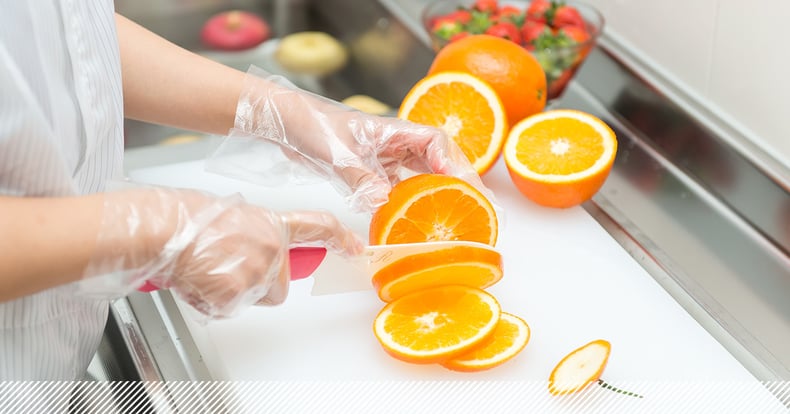Avoid food waste due to "mishandling"
 Food is thrown away and wasted due to a variety of reasons—overproduction, spoilage, expiration, and so on. At Leanpath, we use "mishandling" as a loss reason to define food that is unfit for consumption and must be thrown away due to improper handling during production. There are a myriad of examples of improper handling of food during production, but let’s focus on the most common occurrences I see in a kitchen and what you can do to avoid them.
Food is thrown away and wasted due to a variety of reasons—overproduction, spoilage, expiration, and so on. At Leanpath, we use "mishandling" as a loss reason to define food that is unfit for consumption and must be thrown away due to improper handling during production. There are a myriad of examples of improper handling of food during production, but let’s focus on the most common occurrences I see in a kitchen and what you can do to avoid them.
The most common root cause of mishandling stems from cross contamination. This happens when food becomes unfit for consumption due to poor or accidental food handling procedures in the production or serving area. Many things can lead to cross contamination and it is an ever-present concern that we are serving healthy and safe food to our guests. If you are seeing that this has become an issue, here are a few areas where you can focus your efforts:
- Make sure that the food is stored properly in the walk-in and storage areas.
- Declutter workstations to make them easier to clean and keep organized.
- Introduce color-coded cutting boards and designate which color will be utilized for raw, produce, animal proteins, and RTE foods. Take it one step further by using chefs knives with corresponding color coded handles.
- Make sure sanitizing buckets and towels are located below the work surface and are at the proper strength and changed as needed.
- Gloves should be in use and located close to every workstation.
- Hang the appropriate reminder signage for safety and sanitation in every prep area.
- If your team needs it, give a sanitation refresher training to those in charge of handling food.
Another common mishandling issue is food that is either burned or overcooked. It happens more than you think in every kitchen and is easily avoidable. If this is an issue in your kitchen, focus on these areas to improve:
- Make sure that all culinary team members use a timer for all foods placed in ovens, steamers or roasters.
- Make it common practice that when a timer goes off, the team communicates and someone checks the food.
- Purchase timers for all culinary team members - the ones that clip on- and that the team uses them consistently.
- Be sure to get all ovens calibrated once every six months as part of your preventative maintenance plan.
The last mishandling issue that I see - although not as common - is physical or chemical contamination. These types of contaminations can be deadly, expensive, and are of utmost importance to control and eliminate. Working with your local health department official, they can point out areas in your kitchen that might need attention. Here are a few quick fixes:
- Make sure all chemicals are stored properly and away from any food prep areas.
- All chemicals and sanitizers must be labeled - do not put toxic chemicals in spray bottles that look like the spray bottles used for sanitizing.
- Do your best to not purchase food items in glass containers. If this can’t be avoided, be sure to store glass containers away from food prep area to avoid physical contamination due to breakage.
Although much of this is common knowledge and should already be in practice to run a safe and efficient kitchen, following these guidelines will also help control avoidable food waste due to mishandling. It’s always good to give the culinary team a little refresher regarding common health and safety standards that are in place in your operation.
Sign up for our monthly newsletter in the footer below for the latest in
food waste prevention initiatives, best practices, webinars and more.